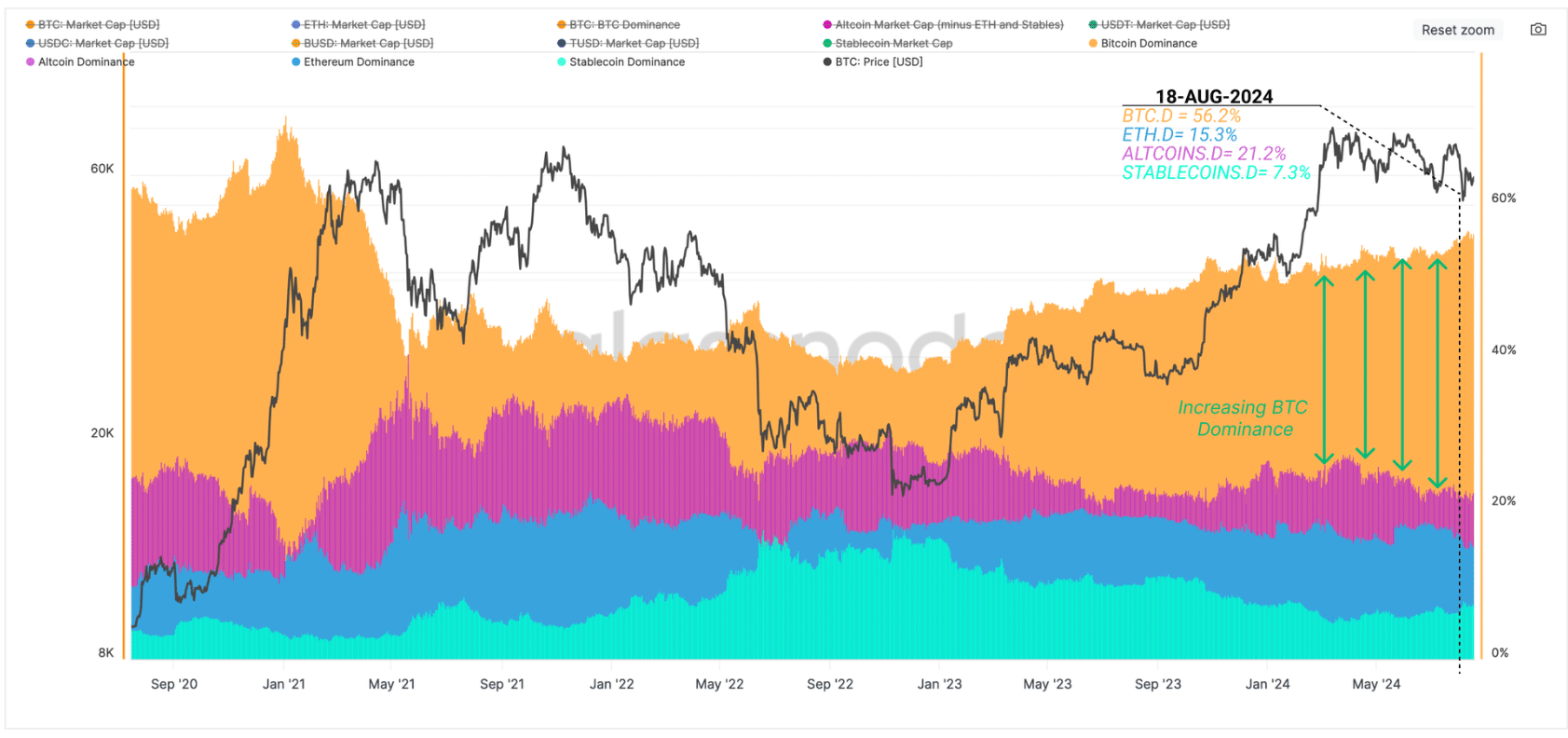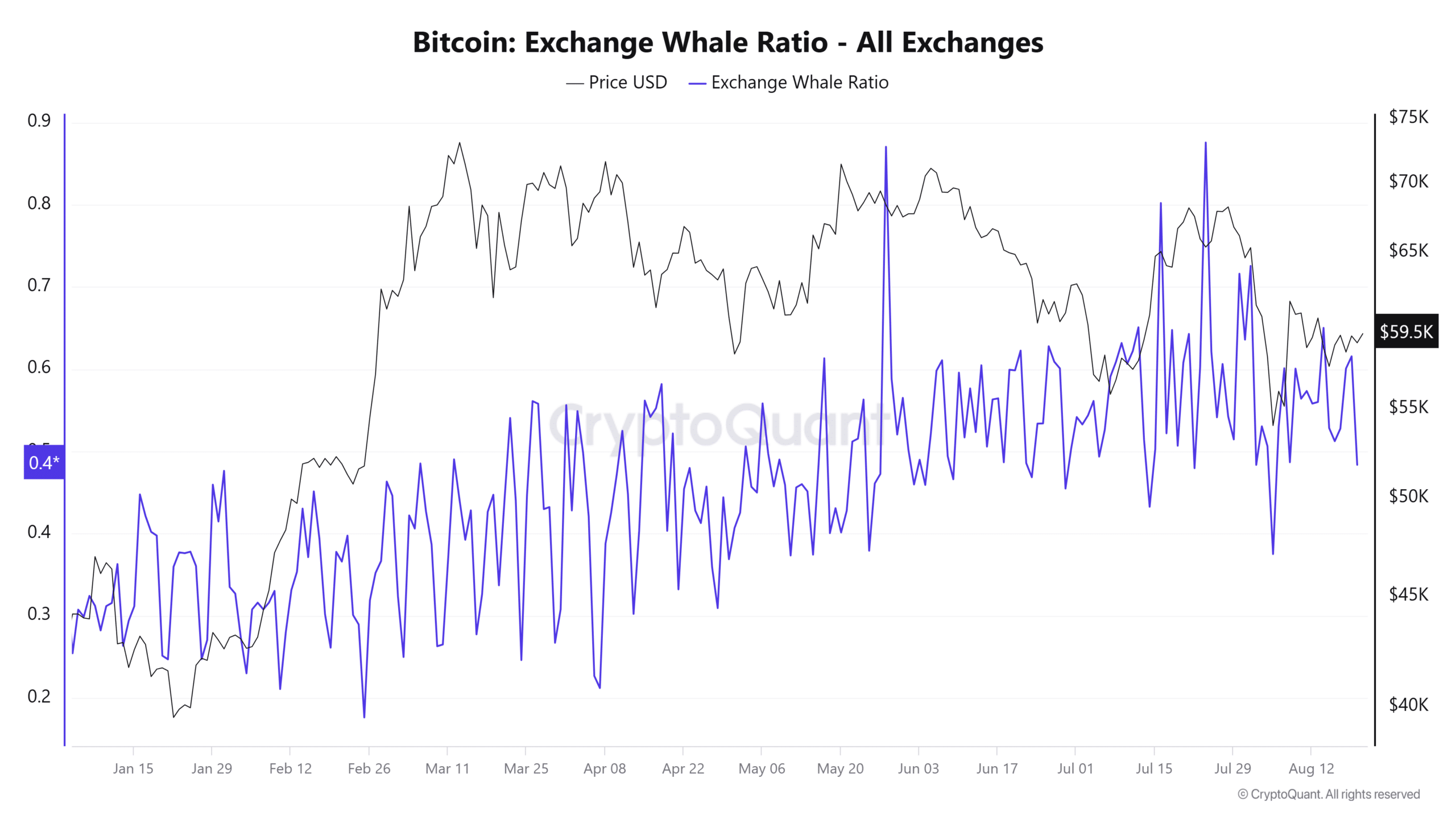Bitcoin dominance hits 56%: Here’s what it means for your holdings
08/22/2024 01:00
Bitcoin dominance has shot up from 38% to 56% within two years, with long-term holders behind rising capital inflows.

- Bitcoin dominance has increased from 38% in 2022 to 56%, largely attributed to long-term holder accumulation.
- Short-term holders are sitting on unrealized losses, with an overreaction bound to cause further dips.
Bitcoin [BTC] continues to dominate the cryptocurrency market, accounting for more than half of the $2.1 trillion global crypto market cap.
According to on-chain analytics platform Glassnode, since the crypto market hit the cycle low in November 2022, BTC’s dominance has grown from 38% to 56%.
On the other hand, Ethereum [ETH] dominance has remained relatively flat in the last two years while altcoins have also lost 6.5% of their market share.
Long-term holders drive Bitcoin dominance
Per Glassnode, Bitcoin’s growth comes amid an increase in capital inflows towards the asset as long-term holders show diamond hands.
The supply of Bitcoin among these traders has increased significantly. The report noted that the majority of these traders became long-term holders after purchasing BTC near the March all-time highs.
“In spite of the tempestuous and choppy price action, the resolve of Long-Term Holders remains resolute, with a clear preference for HODL and acquiring coins,” Glassnode stated.
These holders are sitting on profits of around $138 million per day. This increases the sell-side risk, but profit-taking activities have cooled down.
This observation is further strengthened by CryptoQuant data that shows after intense profit-taking activities by whales in May and July, the Exchange Whale Ratio is now dropping.
Furthermore, buyers appear to be absorbing the sold coins, explaining why Bitcoin price has been rangebound in the last few months since dropping from its ATH.
Short-term holders caused $50K dip
Glassnode also argued that an “overreaction” by short-term holders triggered Bitcoin’s drop below $50,000 earlier this month.
The short-term holder Market Value to Realized Value (MVRV) ratio sits below 1 suggesting that these investors are sitting an unrealized losses. This ratio has been below the equilibrium point in the last 30 days.
Unlike long-term holders, short-term Bitcoin holders are much more reactive to price movements, with their responses behind local tops or bottoms according to Glassnode. This is what happened on 5th August when BTC crashed to a multi-month low at $49,000.
Read Bitcoin’s [BTC] Price Prediction 2024-25
If these investors stay in losses below $59,000 for extended periods, the analysts said it will increase the likelihood of market panic and a severe bearish momentum.
A look at leveraged trading points towards a slight shift to the bullish side. The long/short ratio on Coinglass showed a gradual increase in long positions since 18th August.


